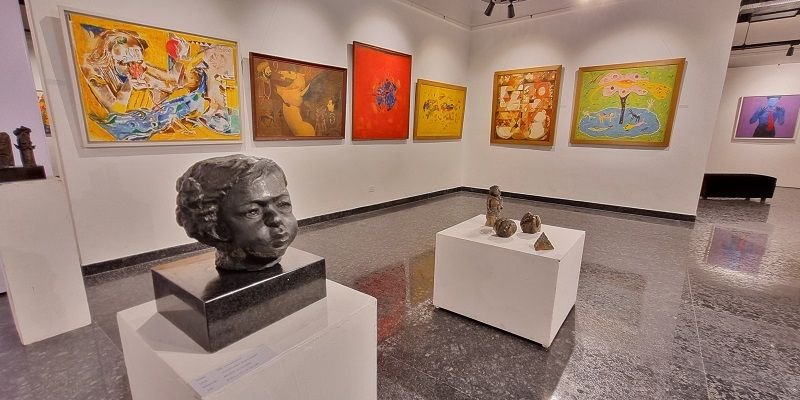[ad_1]
Launched in 2014, PhotoSparks is a weekly feature from YourStory, with photographs that celebrate the spirit of creativity and innovation. In the earlier 790 posts, we featured an art festival, cartoon gallery. world music festival, telecom expo, millets fair, climate change expo, wildlife conference, startup festival, Diwali rangoli, and jazz festival.
Chennai’s Lalit Kala Akademi is showcasing an exhibition this month featuring artworks from its permanent collection of around 3,000 items. Titled Madras Collection, it highlights the breadth and depth of India’s diverse cultural heritage.

Over the years, each exhibition from the collection has featured a curated selection that delights, educates and inspires art enthusiasts. In this photo essay, we present some of the artistic highlights from the indoor exhibition and the outdoor sculpture garden.
“We have proudly exhibited these collections in various prestigious exhibitions such as Through the Eyes of Cholas, Indigenous India, and Clay Bonding,” the academy’s Regional Secretary M. Sovan Kumar explains.
Kumar has a BFA degree from Bhubaneswar and an MFA degree from Banaras Hindu University, and studied ceramic design at Central Academy of Art and Design, China. He has participated in a range of art residencies and camps in Europe, and serves on committees of the National Gallery of Modern Art, Bengaluru.

Lalit Kala Akademi (National Academy of Art) was inaugurated in New Delhi in 1954, with regional centres being subsequently established in Chennai, Lucknow, Kolkata, and Bhubaneswar. The centres host a range of exhibitions, workshops, camps, lectures, and retrospectives.
Over the decades, the academies have also preserved and documented India’s contemporary, modern, folk and tribal art.
The Chennai centre of Lalit Kala Akademi was established in 1978. Its recent exhibitions include Indo-Korean Clay Bonding and a mural demonstration on the occasion of its 69th Foundation Day.

“Each artwork in our collection serves as a window into the past, revealing the age, history and skills of artists from different eras,” Kumar adds. They provide insights into artistic techniques as well as cultural contexts.
The Lalit Kala Akademi centres support artists across mediums like painting, ceramics, sculpture, and printmaking. They have showcased their works at prestigious national and international exhibitions.
“There are many more exhibitions coming to inspire us all,” Kumar signs off.
Now what have you done today to pause in your busy schedule and harness your creative side for a better world?














(All photographs were taken by Madanmohan Rao on location at the gallery.)
[ad_2]
Source link





